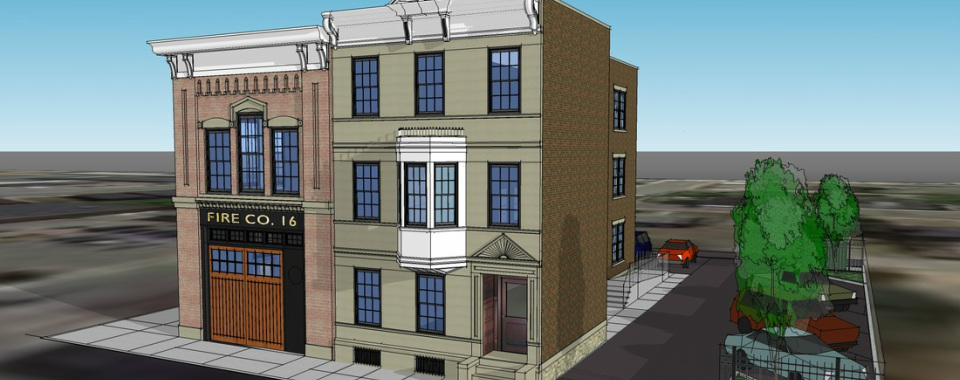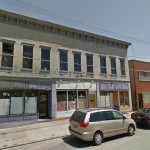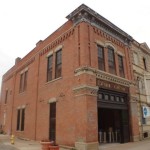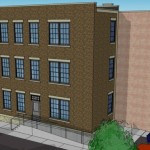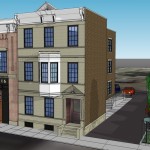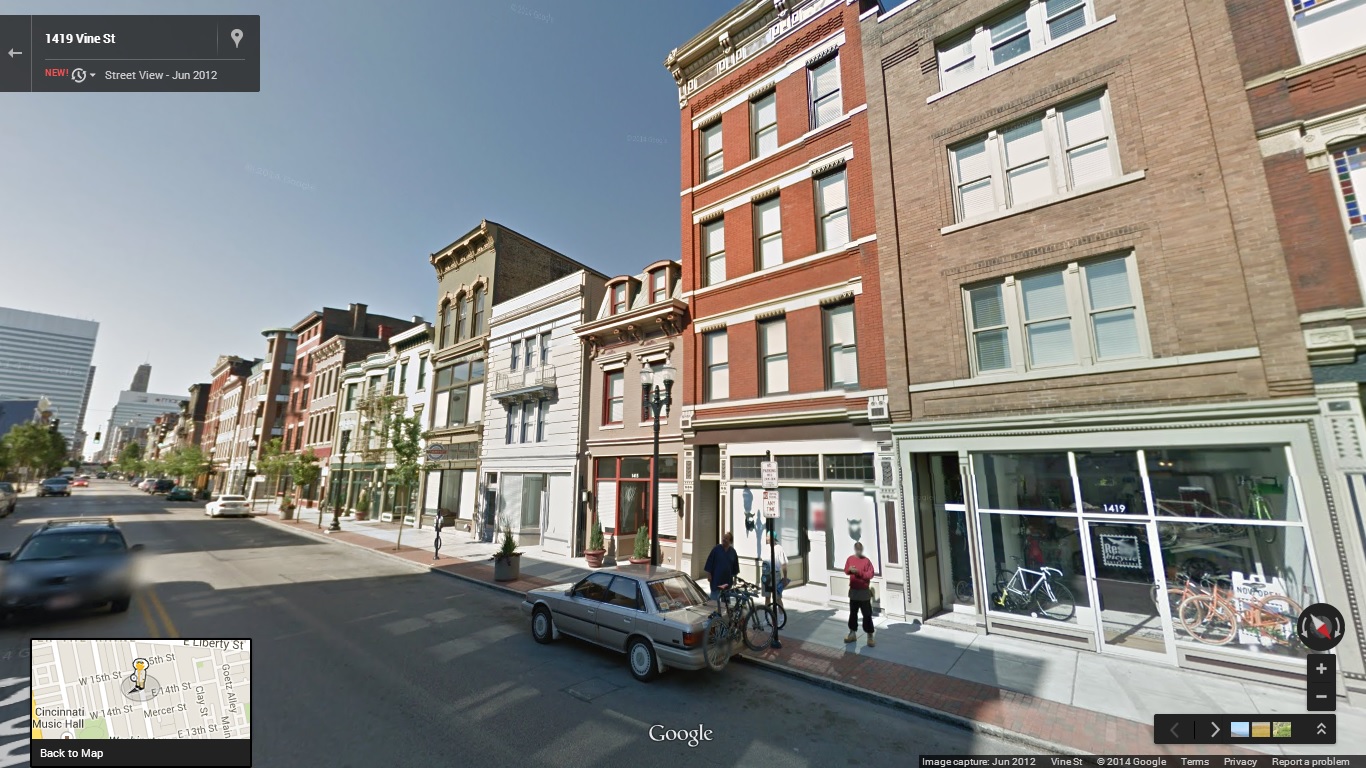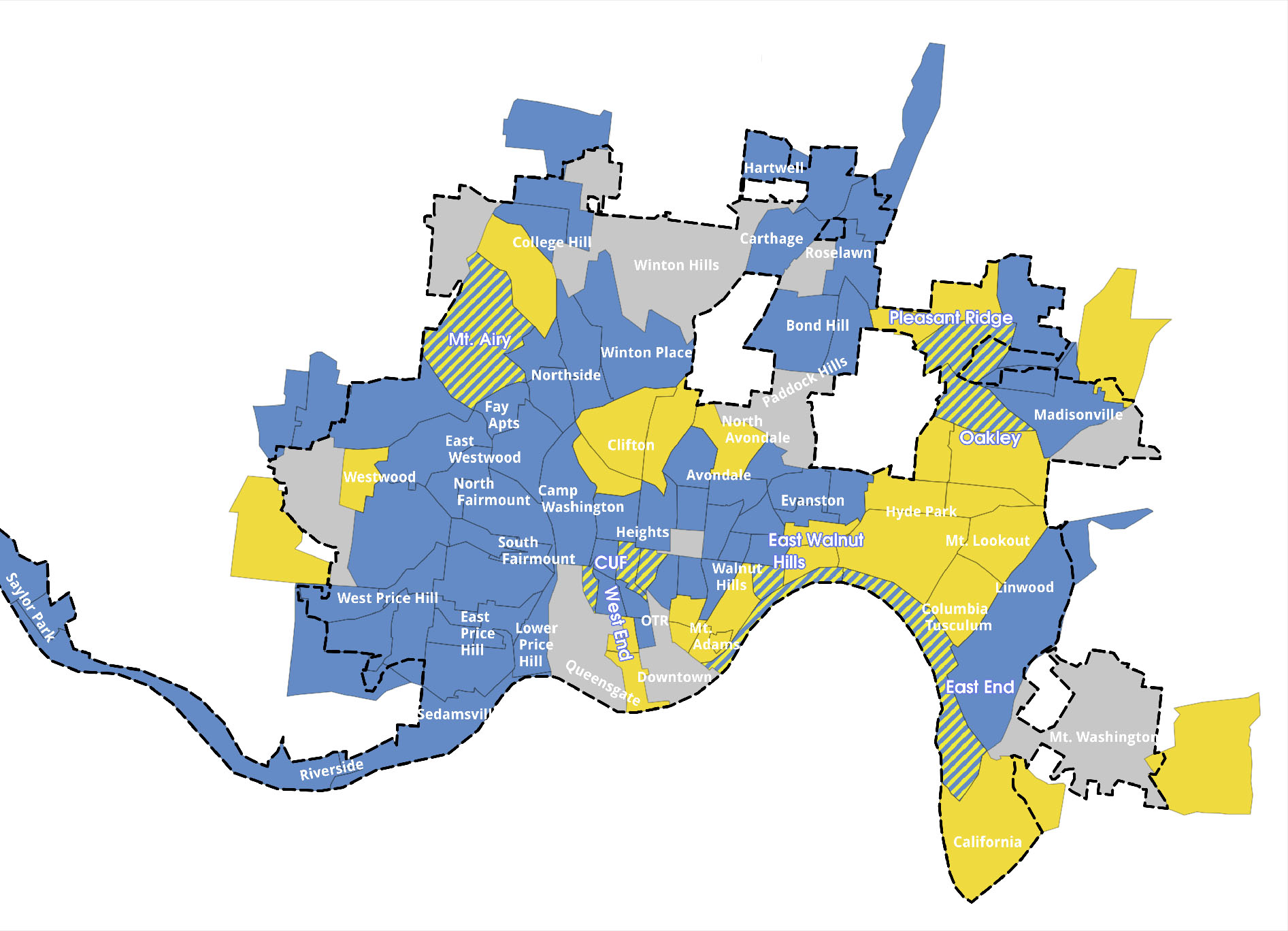You hear a lot about the significance of creating a critical mass when it comes to changing perceptions or establishing a new hub of activity in a neighborhood. That is exactly what Kent Hardman is aiming to do at Walnut Hills’ famed Peeble’s Corner.
Hardman, as you may or may not know, is a local real estate investor that has previously redeveloped the Jackson Theater on Eastern Avenue in Columbia Tusculum. He is also finishing up work on a historic firehouse at 773 E. McMillan Stree in Walnut Hills, which will not only house Fireside Pizza, but also his home.
“I walked in the first time, about a year-and-a-half ago, and thought that I had to bring this building back to life,” Hardman explained. “I’ve always dreamed of one day living in a firehouse.”
Hardman will move into his new 1,650-square-foot apartment in the Samuel Hannaford-designed firehouse at the end of this month, and he expects he will be joined shortly thereafter by Fireside Pizza in early July. He says that he likes to focus on old buildings that are shells where he can build new on the inside.
In the case of the 134-year-old Firehouse Row buildings, that was exactly what he had. In fact, the buildings were in such poor shape when Hardman purchased them from the City of Cincinnati for $1, that one of the two, known as the Hamilton House, had a tree growing through the middle of it.
Since acquiring the properties, the Miami University graduate has invested around $450,000 into the city’s oldest standing firehouse, including $100,000 in the form of a forgivable loan from the City.
As work wraps up later this month on that building, work will then begin next door on the Hamilton House. Hardman expects that he will invest another $550,000 into that property, which he is hoping will be offset by some gap financing from the City.
“It’s amazing what can happen to a property when it’s abandoned and left to die,” Hardman recalled. “The whole goal here is to create a concentrated effort, like what 3CDC has done in Over-the-Rhine, and reach that critical mass in Walnut Hills.”
Later in the year, he hopes to begin work on restoring two more buildings across the street, which is expected to cost around $1 million. In total, this second wave of work will create a dozen apartment units, ranging in size from one to two bedroom units, and two new storefronts. This next phase of redevelopment, however, is contingent upon pending gap financing from the City of Cincinnati.
Developing a critical mass is seen as critical for the ongoing revitalization of Peeble’s Corner. According to neighborhood leaders, the redevelopment of this block is the foundation for what they hope will be a larger turnaround for the business district.
“Over the last couple of years, while strategically purchasing key blighted properties, we realized that we needed to identify a small portion of the business district as an initial focus area,” said Kevin Wright, Executive Director of the Walnut Hills Redevelopment Foundation. “This is that area.”
Once the rest of the financing is secured for the rehabilitation of the 114-year-old properties, located at 772 E. McMillan and 2504 Chatham, it is expected that construction work will take approximately four months to complete.
The hopes are that these restored street-level retail spaces can become additional restaurants, grocery options, cafes, clothing shops and bars, as residents have recently indicated as their top preferences for the area. Wright also says that some capital investments will be needed in the near future, but is confident that the area is moving in the right direction.
“There are some wonderful historic buildings on this block, a safe public parking lot, an office building that is fully leased and expanding, as well as the Five Points alley systems,” Wright explained. “We believe this block can and will begin bringing Peeble’s Corner back to life.”
